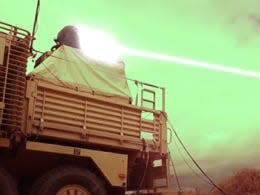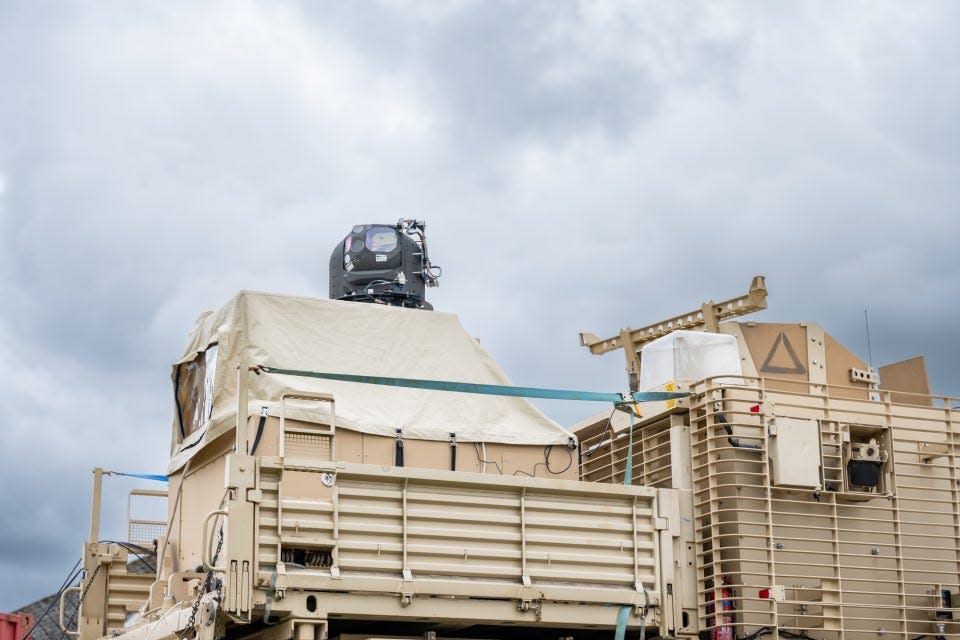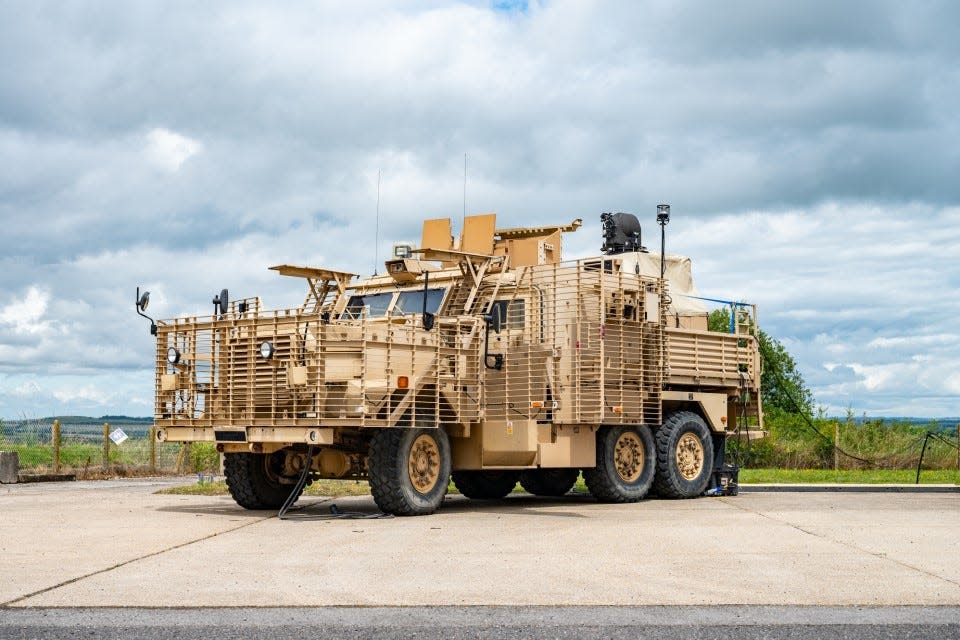The UK says it conducted a 'groundbreaking' trial of a laser beam weapon that can neutralize targets for $0.12 a shot

The UK said it test-fired a laser beam weapon in a "groundbreaking" trial.
The Ministry of Defence said it could neutralize targets for just $0.12 a shot.
Countries are racing to develop weapons that can combat drones and missiles.
The UK says it test-fired a laser beam weapon that can track and take down multiple targets for just $0.12 a shot.
In a press release on Monday, the UK's Ministry of Defence said the laser energy weapon, mounted on an armored vehicle, was able to neutralize targets more than a kilometer, or 0.6 miles, away.
It described the trial as a "ground-breaking" test conducted for the first time from a land vehicle in England, and said it gave the UK military a greater tactical advantage in combat.
In an X post, the MOD said the weapon costs just $0.12 a shot.

"This technology offers a precise, powerful, and cost-effective means to defeat aerial threats, ensuring greater protection for our forces," said Matt Cork, program lead of the UK's Defence and Science Technology Laboratory, or dstl.
Companies involved in its production include Raytheon UK, Frazer-Nash, NP Aerospace, LumOptica, Blighter Surveillance Systems, and Cambridge Pixel.
Raytheon UK said the system was designed to readily integrate with current air-defense systems, such as radar, command and control, and other platforms, and defeat NATO class 1 drones.
"We now look forward to the British Army experimenting with the weapon over the coming months and proving that the technology is battlefield-ready," James Gray, chief executive and managing director of Raytheon UK, said.

According to the MOD, the next testing phase will take place later this year, to further assess the system's usefulness and capabilities in real-world situations.
The UK's MOD didn't immediately respond to a request for comment.
The conflict in Ukraine has seen the proliferation of drones, with both Russia and Ukraine deploying thousands of them on the battlefield.
Ukraine has used drones to devastating effect since the start of the war, destroying high-value targets, deploying them in large swarms, and using them to take out over two-thirds of the Russian tanks that have been destroyed.
Russia has also made strong use of drones.
The Houthis in Yemen, meanwhile, have used drones to target commercial vessels in the Red Sea, and struck central Tel Aviv on Friday using one, killing one person and injuring several others.
Ukraine, Russia, Israel, and other countries have responded to the growing threat from drones by developing anti-drone technology to intercept them, mostly through jamming and in the form of directed-energy weapons.
The UK MOD said in May that it is also developing a radio frequency-directed energy weapon, which uses radio waves to detect, track, and disable electronic components at a range of up to 1000 meters.
The Pentagon is spending $1 billion a year on directed-energy weapons to counter drones and missiles, according to a 2023 report published by the Government Accountability Office.
And other countries, including France, China, Germany, Russia, India, and Israel, are also racing to develop their own directed-energy weapons.
According to Bryan Clark, a Hudson Institute senior fellow and retired US Navy officer, the drone threat seen in the Middle East has highlighted how the US should be using jamming and technologies like lasers and microwave weapons.
"I think what the operations in the Middle East are going to highlight is the fact that we should get those lasers out there more quickly to deal with the drone threat and save us the need to use expensive surface-to-air missiles to shoot them down," Clark told Federal News Network's Eric White in February.
Read the original article on Business Insider

